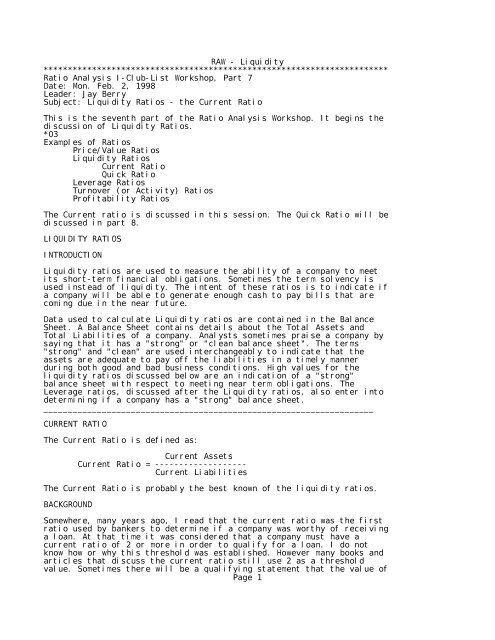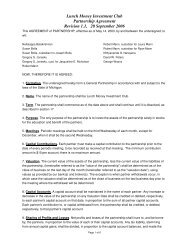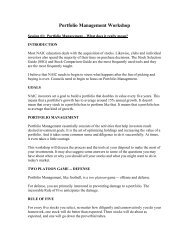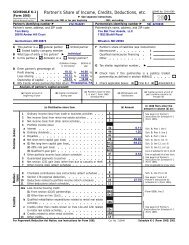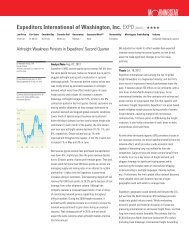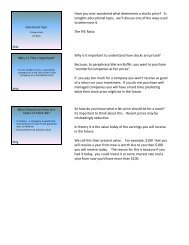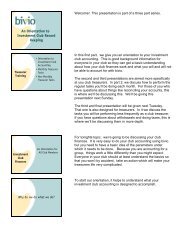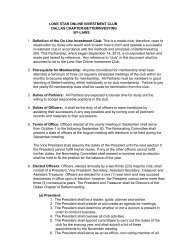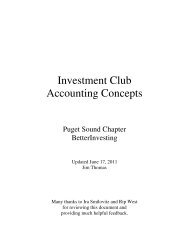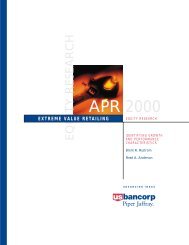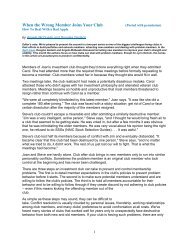Introduction Optional Reading Workshop Content - Bivio
Introduction Optional Reading Workshop Content - Bivio
Introduction Optional Reading Workshop Content - Bivio
Create successful ePaper yourself
Turn your PDF publications into a flip-book with our unique Google optimized e-Paper software.
RAW - Liquidity***********************************************************************Ratio Analysis I-Club-List <strong>Workshop</strong>, Part 7Date: Mon. Feb. 2, 1998Leader: Jay BerrySubject: Liquidity Ratios - the Current RatioThis is the seventh part of the Ratio Analysis <strong>Workshop</strong>. It begins thediscussion of Liquidity Ratios.*03Examples of RatiosPrice/Value RatiosLiquidity RatiosCurrent RatioQuick RatioLeverage RatiosTurnover (or Activity) RatiosProfitability RatiosThe Current ratio is discussed in this session. The Quick Ratio will bediscussed in part 8.LIQUIDITY RATIOSINTRODUCTIONLiquidity ratios are used to measure the ability of a company to meetits short-term financial obligations. Sometimes the term solvency isused instead of liquidity. The intent of these ratios is to indicate ifa company will be able to generate enough cash to pay bills that arecoming due in the near future.Data used to calculate Liquidity ratios are contained in the BalanceSheet. A Balance Sheet contains details about the Total Assets andTotal Liabilities of a company. Analysts sometimes praise a company bysaying that it has a "strong" or "clean balance sheet". The terms"strong" and "clean" are used interchangeably to indicate that theassets are adequate to pay off the liabilities in a timely mannerduring both good and bad business conditions. High values for theliquidity ratios discussed below are an indication of a "strong"balance sheet with respect to meeting near term obligations. TheLeverage ratios, discussed after the Liquidity ratios, also enter intodetermining if a company has a "strong" balance sheet.____________________________________________________________________CURRENT RATIOThe Current Ratio is defined as:Current AssetsCurrent Ratio = -------------------Current LiabilitiesThe Current Ratio is probably the best known of the liquidity ratios.BACKGROUNDSomewhere, many years ago, I read that the current ratio was the firstratio used by bankers to determine if a company was worthy of receivinga loan. At that time it was considered that a company must have acurrent ratio of 2 or more in order to qualify for a loan. I do notknow how or why this threshold was established. However many books andarticles that discuss the current ratio still use 2 as a thresholdvalue. Sometimes there will be a qualifying statement that the value ofPage 1


